#dorothy appleby
Text
Buster Keaton & Dorothy Appleby
His Ex Marks the Spot - 1940
#buster keaton#1930s#1910s#1920s#1920s hollywood#silent film#silent comedy#silent cinema#silent era#silent movies#pre code#pre code hollywood#pre code film#pre code era#pre code movies#damfino#damfinos#vintage hollywood#black and white#buster edit#old hollywood#slapstick#dorothy appleby#his ex marks the spot#1940#i just really like this part#dress#the hip movement#sugar
45 notes
·
View notes
Photo


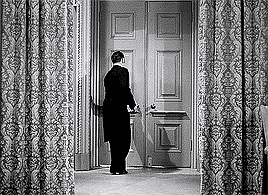
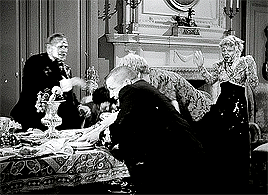




The Three Stooges - In the Sweet Pie and Pie (1941)
#three stooges#the three stooges#comedyedit#classicfilmblr#filmedit#my gifs#in the sweet pie and pie#shorts#1940s#b&w#comedy#curly howard#moe howard#larry fine#mary ainslee#ethelreda leopold#dorothy appleby#geneva mitchell
186 notes
·
View notes
Text

Dorothy Appleby (Portland, Maine, 6/01/1906-Hicksville, New York City, 9/08/1990).
13 notes
·
View notes
Text
WINGS OF YOUTH / YOUNG SINNERS
1930
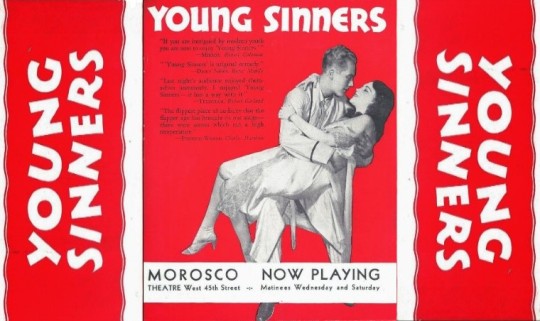
Young Sinners is a play by Elmer Harris. It was originally produced by the Shuberts with Stanley Logan directing. It was previously titled Wings of Youth, Temptation, and When You’re 18.
‘Young Sinners’ is the story of the wild young son of a multi-millionaire who, at twenty, has nothing to live for. After prolonged debauch, his father sends him to a camp with a hard-fisted trainer. There a girl, the daughter of an equally wealthy parent, comes and spends a weekend with him. His salvation is soon brought about and likewise his reconciliation with his father and the world in general.
"It's much better to have a lover. You can shake them when you tire of them, but it is a bore getting rid of a husband." ~ YOUNG SINNERS

The play opened as Wings of Youth at Nixon’s Apollo Theatre in Atlantic City on October 21, 1929. For historical context, this was three days before the Wall Street Crash that sent the country into the Great Depression. From AC, the play moved to the Lyric Theatre in Philadelphia, and then to the Majestic in Flatbush, Brooklyn, before heading to the Main Stem.

The play opened on Broadway as Young Sinners at the Morosco Theatre on November 29, 1929.

It moved to the National Theatre at the end of its run.
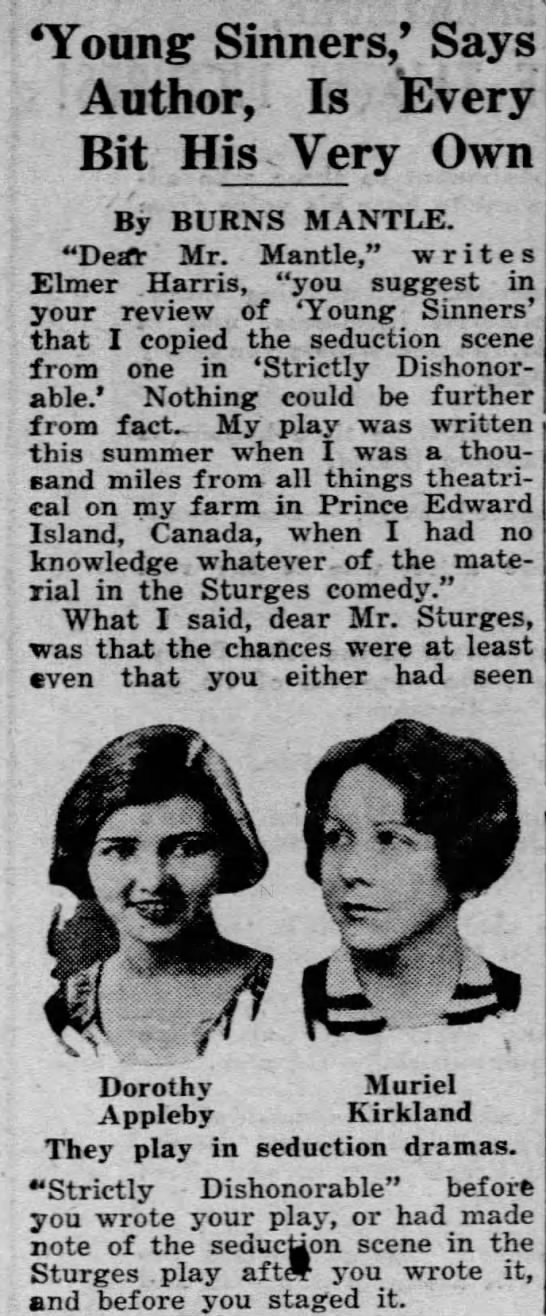
Critic Burns Mantle printed a review that inferred that playwright Elmer Harris had copied the seduction scene in Young Sinners from Preston Sturges’ popular play Strictly Dishonorable.
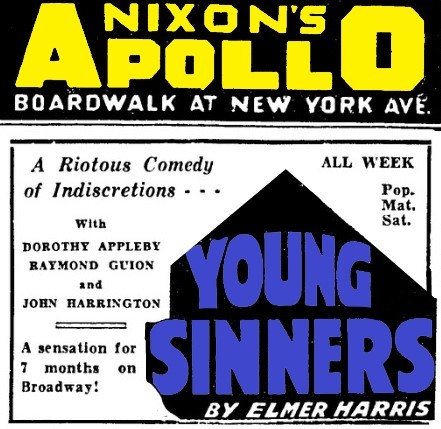
The play, now retitled and a qualified Broadway hit, returned to Nixon’s Apollo Theatre in Atlantic City on June 30, 1930. The play was on a ‘summer Beach vacation from Broadway’ - first in Atlantic City, then in Brighton Beach.

Despite that promise to return to the Masque on August 4th, that did not happen. The date was pushed back and the location moved to the Shubert. Instead, by October the play was being seen in San Francisco at the Curran and the Shubert on Broadway housed the new Ivor Novello play.
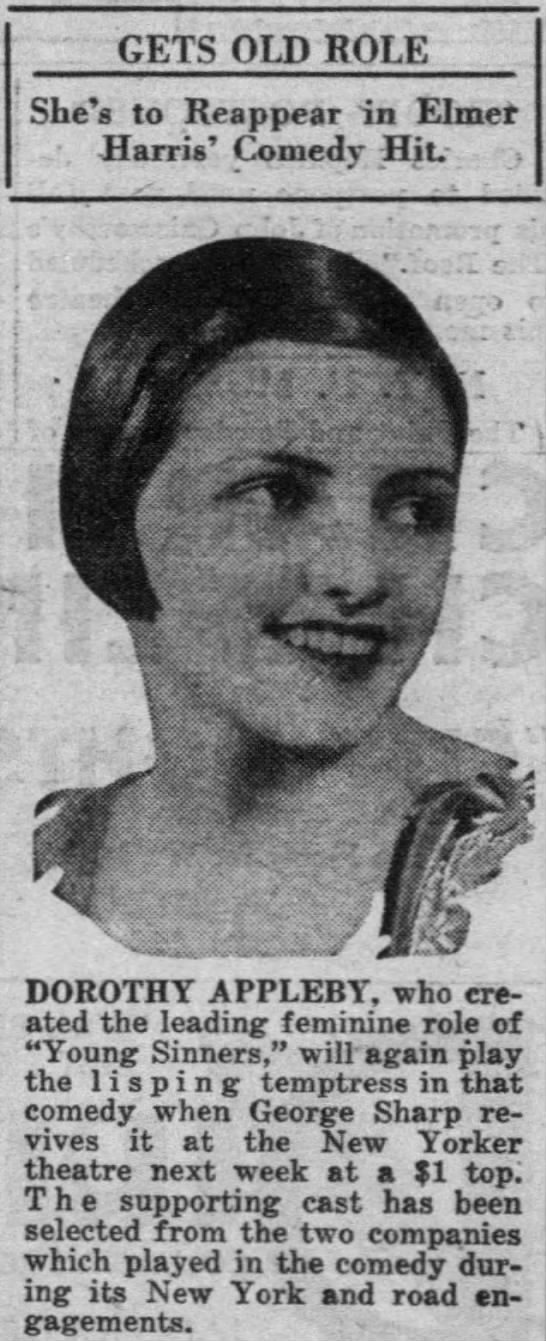
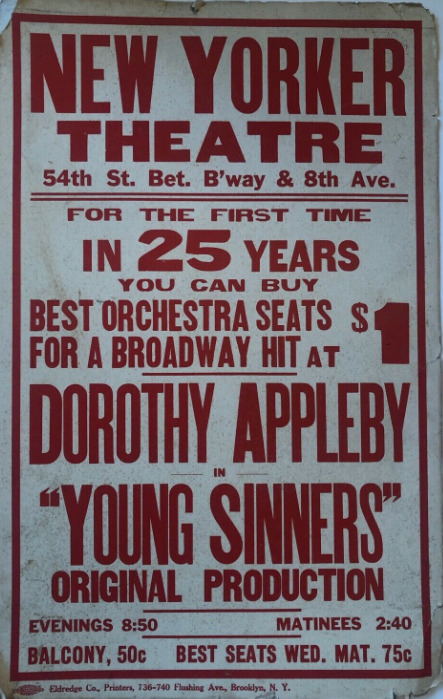
In 1931, the play saw a two-week return to Broadway at the New Yorker Theatre (now Studio 54), at popular prices, opening on April 20th. It was produced by George Sharp.


In 1933, the play returned to Broadway yet again, this time at the Ambassador Theatre (219 West 49th Street) playing from March 6th to April 29th for a total of 72 performances. This time it was produced by Thomas Kilpatrick and staged by Carl Hunt.

Although the cast changed with each iteration, the once constant was Constance - Dorothy Appleby - who appeared in all three. Appleby is best remembered for appearing in comedy films with the Three Stooges, Buster Keaton, and Charley Chase.
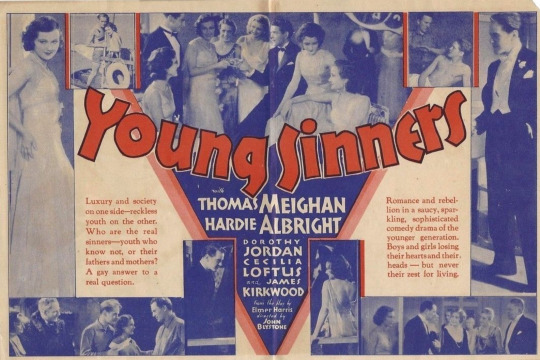
In June 1931, just after the first revival, a film version was released.

The screenplay was initially written by Maurine Dallas Watkins (Chicago) though the script filmed was William Conselman's, who scrapped her screenplay in favor of his own. The film played in Atlantic City at the Virginia Theatre on The Boardwalk.
#Young Sinners#Wings of Youth#Elmer Harris#Atlantic City#Nixon's Apollo Theatre#Dorothy Appleby#1929#Boardwalk#Morosco Theatre#Broadway#Broadway Plays#stage#Columbia Theatre#Ambassador Theatre#Studio 54
2 notes
·
View notes
Text
Hocking in Hokkaido
read it on AO3 at https://ift.tt/XoVJl5p
by LilBooshie
Akutagawa accidently brings Atsushi and Dazai from Port Mafia to the Armed Detective Agency's peaceful Christmas excursion. When hostile Chinese run the horses off they are stranded. They must contend with a snow storm and a marauding bear as well the Chinese hunters. After Akutagawa and Atsushi almost kill each other ice fishing they along with Dazai solve their problems by rigging up a sail on the wagon and sailing west.
Based on Rockin' thru the rockies , a 1940 short film directed by Jules White, starring Moe Howard, Larry Fine, Curly Howard, Lorna Gray, Kathryn Sheldon, Dorothy Appleby, Linda Winters, Dick Curtis, Richard Fiske, Cy Schindell, John Tyrrell, Bert Young
Words: 5869, Chapters: 1/1, Language: English
Fandoms: 文豪ストレイドッグス | Bungou Stray Dogs
Rating: General Audiences
Warnings: Creator Chose Not To Use Archive Warnings, No Archive Warnings Apply
Categories: Gen, M/M
Characters: Akutagawa Ryuunosuke (Bungou Stray Dogs), Nakajima Atsushi (Bungou Stray Dogs), Dazai Osamu (Bungou Stray Dogs), Kunikida Doppo (Bungou Stray Dogs), Oda Sakunosuke (Bungou Stray Dogs), Tanizaki Junichirou (Bungou Stray Dogs), Tanizaki Naomi
Relationships: No Romantic Relationship(s), Akutagawa Ryuunosuke/Nakajima Atsushi (Bungou Stray Dogs), Akutagawa Ryuunosuke/Dazai Osamu (Bungou Stray Dogs), Akutagawa Ryuunosuke & Nakajima Atsushi (Bungou Stray Dogs), Akutagawa Ryuunosuke & Dazai Osamu (Bungou Stray Dogs), Dazai Osamu/Nakajima Atsushi (Bungou Stray Dogs), Dazai Osamu & Nakajima Atsushi (Bungou Stray Dogs)
Additional Tags: Alternate Universe - BEAST Light Novel (Bungou Stray Dogs), Light Novel: BEAST - White Akutagawa/Black Atsushi (Bungou Stray Dogs), Armed Detective Agency Member Akutagawa Ryuunosuke (Bungou Stray Dogs), Armed Detective Agency President Kunikida Doppo (Bungou Stray Dogs), Port Mafia Boss Dazai Osamu (Bungou Stray Dogs), Port Mafia Member Nakajima Atsushi (Bungou Stray Dogs), Armed Detective Agency Member Oda Sakunosuke (Bungou Stray Dogs), Oda Sakunosuke Lives (Bungou Stray Dogs), Comedy, Humor, Slapstick, Christmas, Hijinks & Shenanigans, Dazai Osamu is a Mess (Bungou Stray Dogs), Dazai Osamu Being An Asshole (Bungou Stray Dogs), Dazai Osamu is a Little Shit (Bungou Stray Dogs), Kunikida Doppo Is So Done (Bungou Stray Dogs), Satire, Snow, Winter, Cold Weather, All the characters in the AU act like themselves in the canon universe, No Chinese people were harmed in this fanfiction, Fishing, Akutagawa Ryuunosuke-centric (Bungou Stray Dogs), Akutagawa Ryuunosuke is So Done (Bungou Stray Dogs), Snow and Ice
read it on AO3 at https://ift.tt/XoVJl5p
0 notes
Text
CURTAIN UP!
Lucy On Stage ~ Act 4

Lucille Ball’s dream was to be on Broadway. She achieved that goal in 1960, but along the way she found herself on various other stages. Here’s a look at Lucille Ball, stage actress.

In school, Lucille’s mother Dede encouraged her daughter to be active in the drama club. Lucille performed and directed with the group, staging a production of Charley’s Aunt by Brandon Thomas, which opened on Broadway in 1893. In the above photo, Lucille Ball is seated in the front row, second from the left. Her teacher was named Lillian Appleby. Lucille later honored her by naming a character on “I Love Lucy” after her.

The Celoron, New York, grammar school Lucille attended (above) has long since been razed. But a formative moment in Lucille Ball’s life occurred on this site when her stepfather, Ed Peterson, brought her to see a performance by the renowned monologist Julius Tannen in the school auditorium. As Lucy remembered, “I don’t think a stage career ever occurred to me until that night.” Lucille left school before graduating, going to New York City to attend drama school. The experiment was short-lived and Lucille returned home.
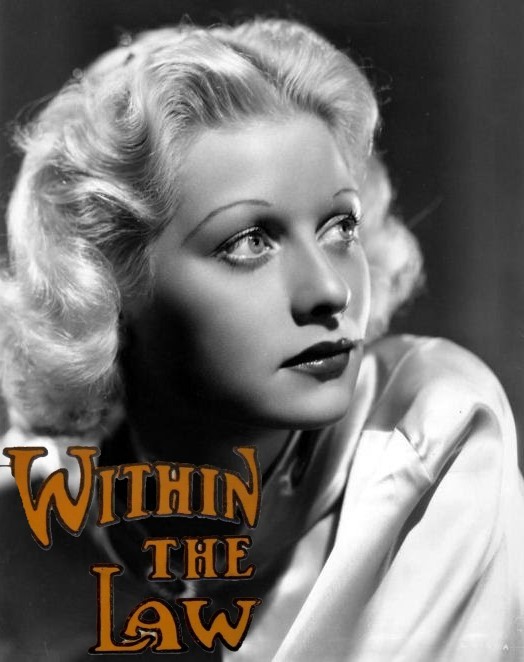
In 1929, 18-year-old Lucille Ball was cast in a production of Within the Law by Bayard Veillier – her first stage performance outside of school. Lucille played the supporting role of Agatha at Jamestown’s Shea Theatre. In 1991, the theater was formally renamed The Lucille Ball Little Theatre in a ceremony with Ball’s family in attendance.
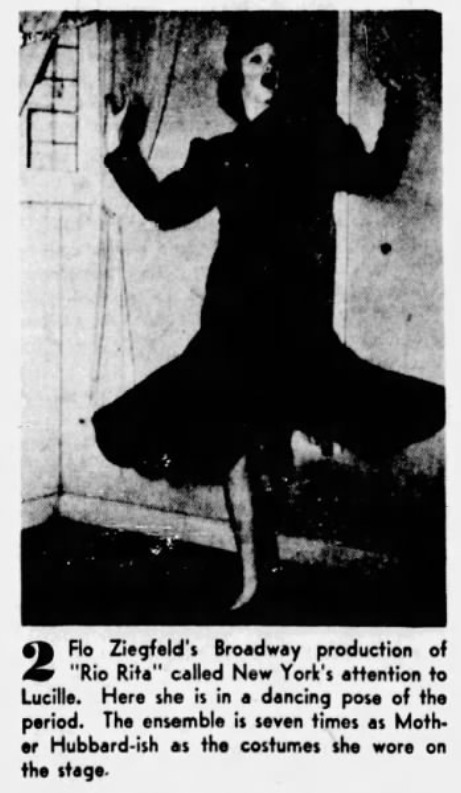
Back in Manhattan, Lucille was cast (but quickly fired) from the chorus of two road shows of Broadway productions. Rio Rita was a New York hit produced by Flo Ziegfeld.

In a 1963 epsiode of “The Lucy Show” Lucy Carmichael says that Thelma Green (Carole Cook) once appeared in the third road company of Rio Rita. The writers used Ball’s real-life history but attributed it to Thelma.
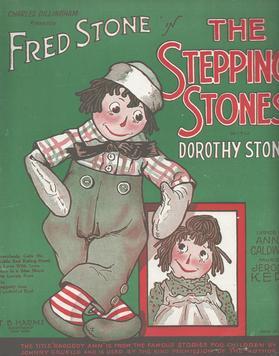
She was also in the road company of The Stepping Stones, a musical fantasy about Raggedy Ann and Andy starring Fred and Dorothy Stone. Again, Lucille was quickly let go.
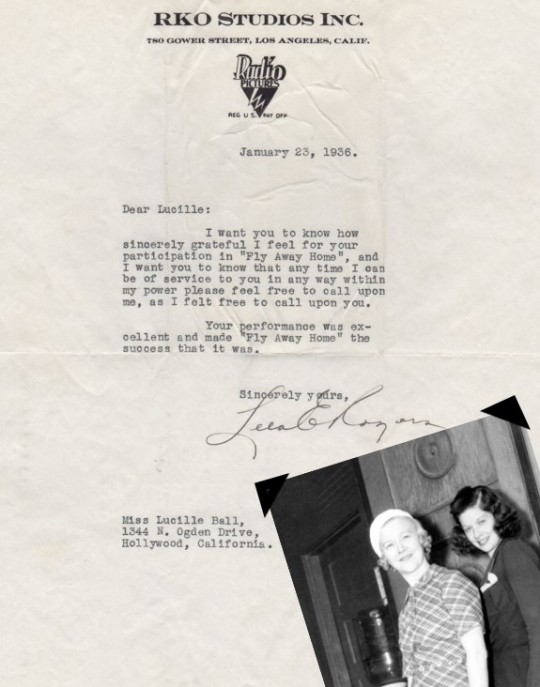
In Hollywood, Lucille Ball was coached by Lela Rogers, Ginger’s mother, on the RKO lot. At the RKO Little Theatre (later the Desilu Workshop Playhouse) Lucille appeared in several plays. In 1936 she was in Fly Away Home, a play that had appeared on Broadway the year before starring Montgomery Clift and Sheldon Leonard. Agents, Managers, and members of the public could attend for twenty five cents.

Also in 1936, she appeared in Breakfast With Vanora by Fred Ballard, which received good notices in the press. Lucille played the leading role and Barbara Pepper was in the ensemble. Above, Lela instructs John Shelton how to hold a gun while Lucy looks on.

In 1937, Lucille took a break from Hollywood to make (what she hoped) would be her Broadway debut in Hey Diddle Diddle, a play by Bartlett Cormack starring Conway Tearle. The play premiered at McCarter Theatre in Princeton, New Jersey, with a destination of the Vanderbilt Theatre on Broadway. In its second out-of-town stop in Washington DC, Tearle become gravely ill. That, combined with the fact that producers felt the script needed revisions, caused the production to be halted. Lucille returned to Hollywood. In 1953, Tearle’s name was mentioned on “I Love Lucy.” He had died in 1938.
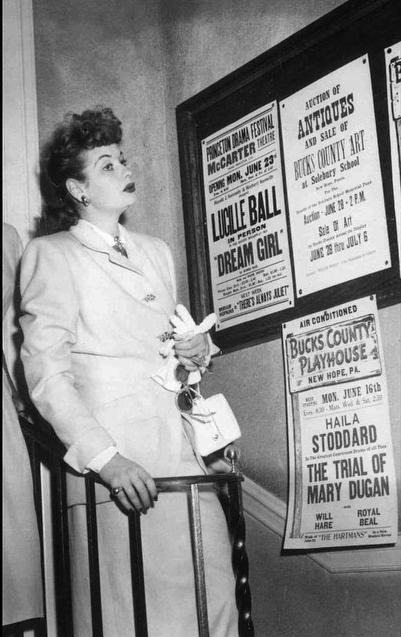
In mid-1947, now married and a successful film star, Lucille Ball again began to think about her stage aspirations and left Hollywood for the boards. She toured in a tour of Dream Girl, a fantasy play by Elmer Rice that had played Broadway in 1945.

The play’s fantasy sequences seemed tailor-made for Ball’s style and comic wit. In a way, Georgina was a prelude to the “Lucy” character on TV, who is dreaming her way out of her suburban life - and sometimes succeeding.
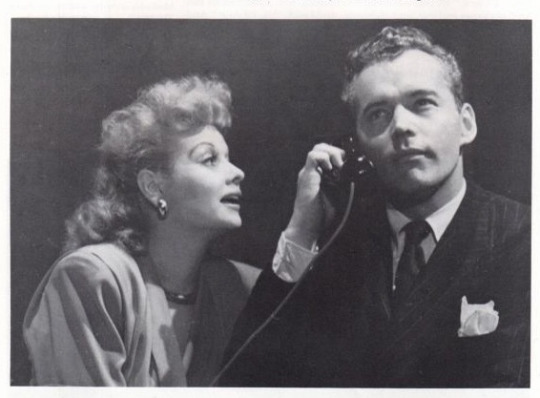
The play co-starred Scott McKay as the imaginative writer. McKay played the role of Wilbur in the 1958 pilot for TV’s “Mr. Ed” but was replaced on the series by Alan Young.

"I have seen other productions of this play, but the only actress whose performance really delighted me was Lucille Ball. She lacked… tender wistfulness, but her vivid personality and expert timing kept the play bright and alive." ~ Edgar Rice, Playwright

The tour was produced by Herbert Kenwirth who later directed 14 episodes of “Here’s Lucy.” It featured Barbara Morrison, Alan Hewitt, and Hayden Rorke, who would all later appear on Lucy sitcoms.

In January 1948, Lucille got the opportunity to recreate the role in Los Angeles, but fell ill with a virus shortly after it opened and the show closed prematurely. It wasn’t long before Lucille was back in front of a live audience, but this time on radio, as the star of the sitcom “My Favorite Husband,” which led to her meteoric success on “I Love Lucy.”

After the series came to an end in early 1960, Lucille again revived hopes of acting on Broadway. Wildcat, a new musical about by Richard Nash with songs by Cy Coleman was looking for a star. Nash had envisioned the main character of as a woman in her late 20s, and was forced to rewrite the role when 49 yearl-old Lucille Ball expressed interest not only in playing it but financing the project as well. Lucille personally chose her co-stars Keith Andes as her love interest and Pauls Stewart as her sister. Future sitcom star Valerie Harper was in the chorus (above right).
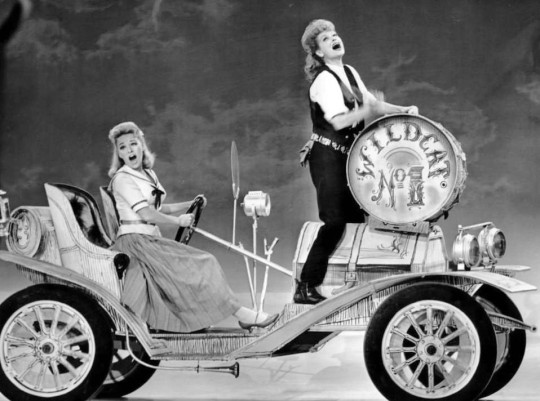
Lucille played Wildcat ‘Wildy’ Jackson, who dreams of striking oil in 1912 Centavo City, California. The score included what would become her signature tune: “Hey, Look Me Over”.

The Philadelphia tryout opened on October 29, 1960 to a glowing review from Variety, but local critics were less enthusiastic. The scheduled Broadway opening had to be postponed when trucks hauling the sets and costumes to New York were stranded on the New Jersey Turnpike by a major blizzard. After two previews, the show opened on December 16 at the Alvin Theatre (now the Neil Simon).
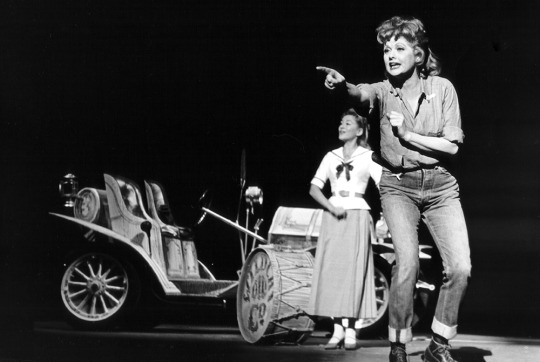
Ball quickly realized audiences had come expecting to see her Lucy Ricardo persona and began ad-libbing to bring her characterization closer to that of the zany housewife she had portrayed on television. But the rigors of singing and dancing in a Broadway musical eight times a week caught up with Ball. She got illl and demands for refunds ran high, the producers planned to close the show for a week to allow her to recover. The closure came sooner than planned when Ball, suffering from a virus and chronic fatigue, departed for Florida. She returned two weeks later, but collapsed on stage. It was decided the show would close for nine weeks at the end of May and reopen once its star had fully recovered but when the musicians' union insisted on members of the orchestra being paid during the shutdowns. Not even Lucille’s deep pockets could afford the cost, and the show closed permanently on June 3, 1961.

Lucille returned to Hollywood, her dream realized, even if it was short-lived. Thereafter, she would incorporate her love for theatre into her television and film performances, starring in many ‘mini-musicals’ on “The Lucy Show” and “Here’s Lucy” and - in 1974 - tackling the full-scale Broadway musical Mame on film.
CURTAIN DOWN on ACT 4
#Lucille Ball#Broadway#Stage#Theatre#Musicals#Rio Rita#Wildcat#Paula Stewart#Hey Diddle Diddle#Dream Girl#Stepping Stones#Charley's Aunt#Lela Rogers#RKO#Within The Law#Jamestown#McCarter Theatre
0 notes
Photo
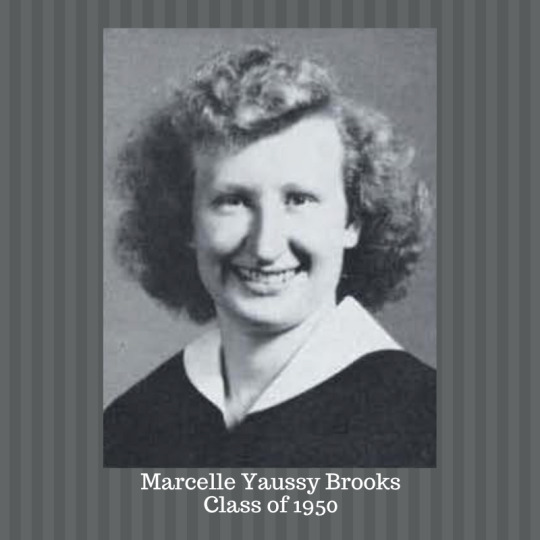
Marjorie E. Brooks, 92, of Sulphur Springs entered into Eternity with her Savior on Saturday, May 28, 2022.
She was born in Bucyrus on September 20, 1929 to the late Wesley and Bessie (Durigg) Yaussy. She was Valedictorian of the Bucyrus High School Class of 1947. Marge became a born-again Christian in her late teens and enrolled at Bob Jones University. While attending BJU, Marge met Jeffrey Brooks of Bluefield, W.Va. while waiting tables together. They found themselves on the same bus as they headed home for the holidays. He got off in Bluefield and she went on to Ohio. They began a two-year courtship and were married on June 6, 1953. After moving to Ohio in 1964, Marge began teaching at Col. Crawford Schools. She earned a master's degree from Bowling Green State University and had doctoral studies as well. Her teaching career took her from the junior high classroom to elementary school Principal, impacting many students and teachers with her loving, firm, and passionate approach.
Marge was feisty, independent, intelligent, generous, conservative, active, kind, and sassy. She was a woman of devout faith in her Savior and firm in her decisions and convictions. She was an avid reader, gardener, and collector. Marge also was a competitor. She played softball in her younger years, picked a team to support in every sporting event she watched, and she could be heard at some distance while rooting loudly for the Buckeyes and Browns. She and Jeff also had the good fortune to travel to several parts of the North America and Europe. Marge always wanted good things for her grandchildren. She was present at every event or program she could and bought thoughtful gifts for birthdays and holidays. Marge worshiped at Bucyrus Bible Church and remained active as a volunteer for elections, in the courthouse, and for hospice. She looked forward to visiting with fellow retirees and family both near and far.
Marjorie is survived by three children, Bruce (Donna) Brooks of Nova Scotia, Canada and their children, Shannon (Adam) Owens, Christina (Josiah) Mendoza, and Kyle Brooks; Michael (Carla) Brooks of Michigan and their children, Melissa (Steve) Springer, Jordan (Ellen) Brooks, and Tyler Brooks; and Lori (John) Lowman of Ashland and their daughters, Lauren (Oron) Wilcox, Alaina Lowman, Deandra Lowman (fiancée Laura Huthmacher), Shannon (Andrew) Cuffman, Devan (Tyler) Lefever, and Jasmin Love. She also leaves nine great grandchildren and her sisters, Marcele Yaussy, Dorothy Wood, and Vera Swinehart, along with many extended family.
She was preceded in death by her husband of 58 years, Jeff Brooks; their son, Eric Brooks; an infant great grandchild, Brooks Wilcox; brother, Harold Yaussy; and sister, Vivian Appleby.
Services for Marge will be held on Wednesday, June 1 at Wise Funeral Service in Bucyrus. Her family will receive friends from 11 am – 12:55 pm and her funeral will begin at 1:00 pm with Pastor David Layton officiating. Burial will follow in Oakwood Cemetery.
Memorial donations can be made payable to Bucyrus Bible Church or a charity of the donor's choice and given though the funeral home. Memories and photos can be shared on Marge's Tribute Wall.
To send flowers to the family or plant a tree in memory of Marge Brooks, please visit our floral store.
#Bob Jones University#Archive#Obituary#BJU Hall of Fame#BJU Alumni Association#2022#Class of 1950#Marge Yaussey Brooks#BJU Faculty#BJA Faculty
0 notes
Text

Buster Keaton with Dorothy Appleby and Elsie Ames in Jules White’s SHE’S OIL MINE, released 80 years ago today (November 20, 1941)
24 notes
·
View notes
Photo


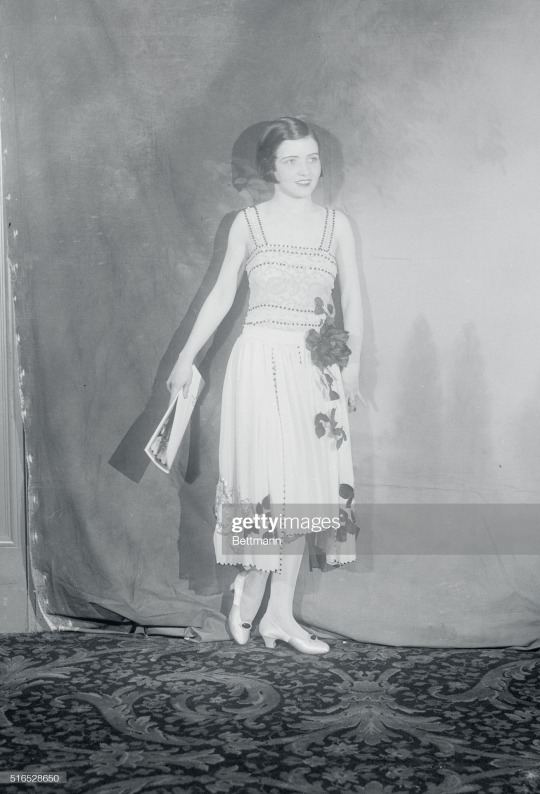


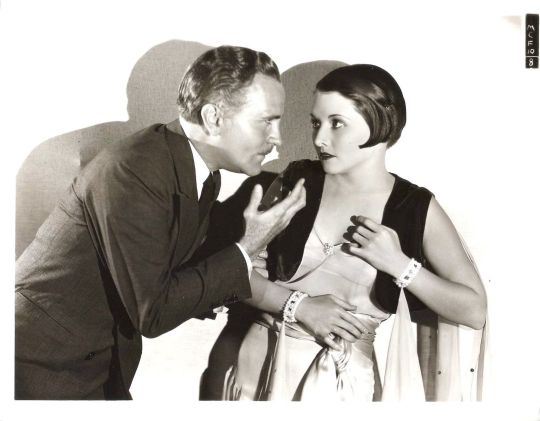
Happy Birthday To Beautiful Forgotten American Actress Dorothy Appleby
(Born 6th January 1906)
Pics Source: Bing Images & Getty Images
(No.5-10)
#dorothy appleby#birthday girl#born 6th january 1906#beautiful forgotten american actress#stage and screen actress#won miss maine beauty contest 1923 - chosen by rudolph valentino himself#her stage roles include: helen of troy - young sinners - springtime for henry#on stage at the tender age of 2 1/2#a supporting actress in films in 1930's & 1940's#films include: high sierra & manpower (both 1941) and many three stooges shorts#60 acting credits#years active 1927-43#pics source: bing images & getty images
16 notes
·
View notes
Photo
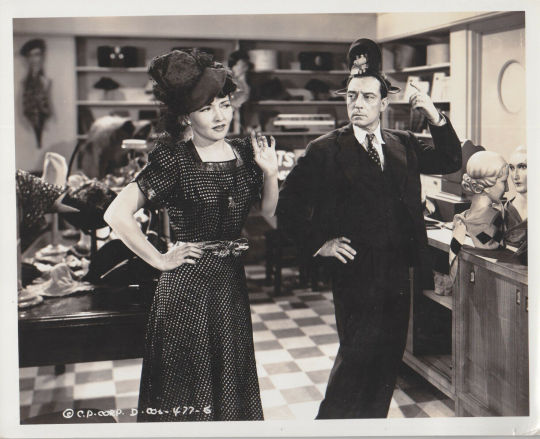
found on worthpoint
22 notes
·
View notes
Text

The Taming of the Snood - 1940
#buster keaton#elsie ames#dorothy appleby#the taming of the snood#1940#1940s#silent film#silent comedy#silent cinema#damfino#damfinos#film#comedy#cinema#black and white#vintage hollywood#slapstick#old hollywood
26 notes
·
View notes
Text
Stagecoach 1939

#stagecoach#john wayne#claire trevor#john ireland#montgomery clift#walter brennan#harry carey jr#hank worden#andy devine#john carradine#thomas mitchell#george bancroft#donald meek#louise platt#tim holt#tom tyler#berton churchill#chief john big tree#frank baker#dorothy appleby#yakima canutt#buddy roosevelt#jack pennick#paul mcvey#florence lake#si jenks#william hopper#francis ford#franklyn farnum
15 notes
·
View notes
Text

Buster Keaton-Dorothy Appleby "Nothing but pleasure" 1940, de Jules White.
19 notes
·
View notes
Photo

May your New Year be as good as Dorothy’s!
Buster Keaton - Dorothy Appleby | Pardon My Berth Marks | 1940
#happy new year#buster keaton#pardon my birth marks#1940#dorothy appleby#columbia short#this girl's living the dream#pardon my berth marks pic#i wish buster would drop into my berth
80 notes
·
View notes
Photo
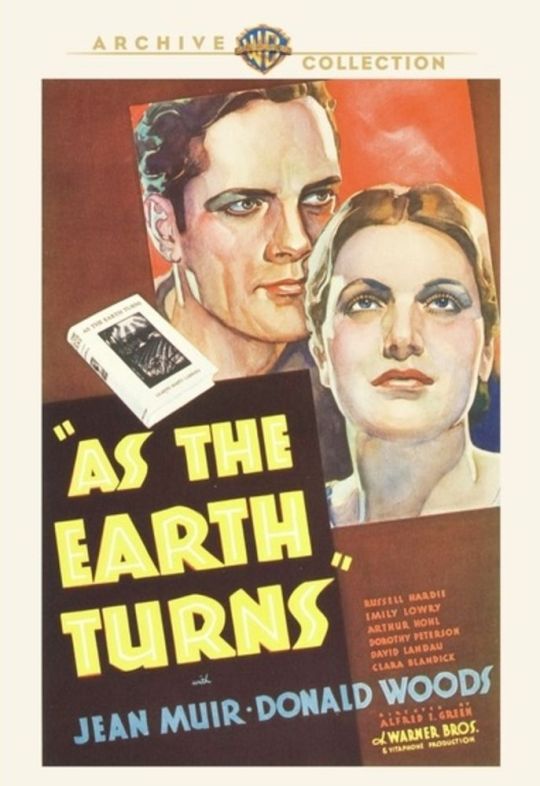

As the Earth Turns (1934) Alfred E. Green
May 19th 2020
#as the earth turns#1934#alfred e. green#jean muir#donald woods#russell hardie#emily lowry#arthur hohl#dorothy peterson#david landau#clara blandick#william janney#dorothy appleby#sarah padden#egon brecher#pre-code
0 notes
Text
The Making of The Owl Service
The Owl Service — Granada's first major all location, fully-scripted drama serial — was adapted in eight episodes by Cheshire author Alan Garner from his award-winning book. The story is based on a strange old Welsh legend which gradually unfolds while three teenagers — Alison, Roger and Gwyn — are on holiday in Wales.
— Granada TV 1978 press release.
The Owl Service is a kind of ghost story, in real life as well as on the film or page. Right from the start things happened that haven't happened with any other book I've written. It began when I read an old Welsh legend about Lleu, and his wife Blodeuwedd, who was made for him out of flowers. Later she fell in love with Gronw Pebyr, and together they murdered Lleu. Lleu was brought back to life by magic, and he killed Gronw by throwing a spear with such force that it went right through the rock behind which Gronw was sheltering; and the rock, says the legend, is called the Stone of Gronw to this day. Blodeuwedd, for her part in her husband's murder, was turned into an owl .
— Alan Garner, Filming The Owl Service.
They took the flowers of the oak, and the flowers of the broom, and the flowers of the meadowsweet, and from those they called forth the very fairest and best endowed maiden that mortal ever saw.
— The Mabinogion.
Many accomplished actors live the parts they are playing, but it's no joke when a legend takes such a grip on them that it affects their private lives even after filming is over. This is precisely what happened to blonde actress Gillian Hills (she was one of the little girls who stripped off in Blow Up), Francis Wallis and Michael Holden. They play the three teenagers, step-brother and sister Roger and Alison and Welsh boy Gwyn in Granada's current mystery serial, The Owl Service. The story, which centres round an old Welsh legend, is set in a remote mid-Wales valley near the town of Dinas Mawddwy, where much of the filming was done. The trio discover an old dinner service in an attic and Alison finds that if she traces its unusual pattern and fits it together, the figure of an owl appears. In fact, owls are the key to the whole intriguing mystery (now in its third week) in which the three become involved in the ancient legend of the beautiful Blodeuwedd. Created out of flowers as a wife for the hero Lleu, she was turned into an owl after being unfaithful to him with her lover Gronw. The cruelties and passions generated by these legendary figures still disturb the valley, and begin to take possession of Gwyn, Alison and Roger. Slightly sceptical of the legend, I invited the trio to a reunion down in the depths of the Essex country-side. I took with me one of the original plates, with startling results. It conjured instant memories which hurtled us all mentally into mid-Wales. Brought up in a converted shepherd's cottage in Snowdonia, 19-year-old Michael Holden described how the legend took control of them during filming.
— Ann Beveridge, The Observer on Sunday magazine, January 1970.
It was an incredible experience for all of us. It was as if we personally were really living the thing. The legend, the spirit of the valley was so strong that we became obsessed by it. I felt very close to the whole thing. The area was so much like where I grew up in Bethesda—and it was nice to go back to being outnumbered by sheep.
— Michael Holden, The Observer on Sunday magazine, January 1970.
The Owl Service is a kind of ghost story, in real life as well as on the film or page. Right from the start things happened that haven't happened with any other book I've written. It began when I read an old Welsh legend about Lleu, and his wife Blodeuwedd, who was made for him out of flowers. Later she fell in love with Gronw Pebyr, and together they murdered Lleu. Lleu was brought back to life by magic, and he killed Gronw by throwing a spear with such force that it went right through the rock behind which Gronw was sheltering; and the rock, says the legend, is called the Stone of Gronw to this day. Blodeuwedd, for her part in her husband's murder, was turned into an owl. The legend stuck in my mind for several years, and then one day Griselda's mother showed me an old dinner service that she had. She had noticed that the floral pattern round the edges of the plates could be seen as the body, wings and head of an owl. Griselda traced the pattern, juggled it a bit, and there it was-a paper owl.
— Alan Garner, Filming The Owl Service, an Armada special, 1970.
Rehearsals began at Poulton, and I met the actors for the first time. It was a nasty experience. "Well," said Peter, "do they look right?" I wanted to run. They looked too right. It was like a waking dream. Here were the people I'd thought about, who'd lived in my head for so long ; but now they were real. I couldn't accept that they were only actors. And this feeling got worse when they began to read their parts, and speak the words I'd given them. We took the cast to Wales for a couple of days right at the start, so that they coil hi get the feel of the original setting. Now my waking dream grew worse. The characters were where I'd imagined them, and it was as if I was looking at live ghosts.
— Alan Garner, Filming The Owl Service, an Armada special, 1970.
Bridget Appleby (Graphic Artist) Richard Branczik (Camera Assistant) Harry Brookes (Sound Recordist) Peter Caldwell (Designer) Jack Coggins (Generator Operator) Stewart Darby (Stills Photographer) Sue Fox (Press & Publicity) Alan Garner (Scriptwriter) Ray Goode (Cameraman) James Green (Chargehand Electrician) Frank Griffiths (Music Recordist) Don Kelly (Film Editor) Alan Kennedy (Props Manager) Neil Kingsbury (Sound Assistant) John Martin (Electrician) Ian McAnulty (Stage Hand) John Murphy (Casting Director) Marjorie Norrey (Wardrobe) John Oakins (Unit Manager) Peter Plummer (Producer & Director) Dick Pope (Camera Assistant) Michael Popley (Camera Assistant) Jon Prince (Asst. Film Editor) Harry Rabbie (Camera Assistant) Elvira Riddell (Make-up) Phil Smith (Sound Recordist) Michael Thomson (Camera Assistant) Peter Walker (Dubbing Mixer) Alan Waterfall (Set Dresser) Louise Williams (Production Assistant) David Wood (Cameraman).
Granada Television for ITV. December 21, 1969 — February 8, 1970. 16mm, colour. Filming locations: Dinas Mawddwy, Gwynedd, Wales, UK and Poulton Hall, Liverpool, Merseyside, England, UK.
The Owl Service was much admired but because I could never bear to watch myself I have seen it only now. Father's very proper English family frowned at having an actress in the family yet they watched the first episode to see what I was like and followed the whole series. That was a huge compliment. The Owl Service was a magnificent gift that allowed me to haul back a slice of my lost youth. It had fallen by the wayside at fourteen when I was 'discovered' by Roger Vadim. No more contact with kids my age meant there was a chink in my learning compass. So my memory is not of anecdotes, stories. I was totally engrossed with the feel of Alison. In effect, Alison allowed me to become while she too was unfolding. It also played a part in changing the course of my life. The graphics designer for The Owl Service came while we were filming and I told him how curious I was about his work: when I was a recording artist in Paris I'd go round to see my friends at the music magazine Salut Les Copains - I adored the way the magazine was being put together. The designer invited me to visit the TV centre where they produced the visuals, soon I began at St Martins, but work was always taking me away, then Sir John Cass, Saturdays - but I was filming a lot. Throughout my childhood I was always drawing. My grandmother was a painter but we never met. When I began acting I gave up drawing. Three years after The Owl Service I would plunge into illustrating. The Owl Service is a peculiar work. Singular. Mesmerising. It stands out as a one off ... I never thought The Owl Service was for children only. It felt as if it fit a larger audience. That's what made it special. Because it also belongs somewhere where the memory of one's own adolescence lies. It is super-real to the extent that it becomes unreal. Wagnerian. And too, like an old film it unreels itself repeatedly, then begins again. Any criticism that the series was unsuitably adult for children is untrue. Never underestimate the child; it is pure, it observes, makes up its own mind. But then is taught to see things otherwise ... I have not read Peter's book I've Seen a Ghost. I was unaware of it and maybe I should not read it. My grand father, the superlative Polish poet Boleslaw Lesmian, was ruled by his exceeding 'superstitiousness,' so the family was too. Artists are sensitive to this in varying degrees. I am glad I focused on Alison. But if something unusual happened I would keep it to myself. I prefer to believe I am contemplating the cosiness of a blanket than a levitating counterpane.
— Gillian Hills in conversation with Kevin Lyons, The Encyclopedia of Fantastic Film and Television, 2008.
I've Seen a Ghost: True Stories from Show Business compiled by Richard Davis. Hutchinson, 1979.
The mood of this book darkens perceptibly with Mr Plummer's piece. Many of you will remember the excellent TV adaptation of Alan Garner's ' The Owl Service', that strange novel about spiritual possession, haunting and fascinating in its own right. As you will read, uncanny events took place on screen as well as on. It seems that when you are creating productions about the super-natural in whatever medium, you are laying yourself wide open to psychical onslaught.
We shot it on location at a little village church in Cheshire and it concerned the theory that the 'dark lady' referred to in Shakespeare's sonnets was a local girl, Mary Fitton. Her ghost is said to haunt the area around the church which is, in any case, a strangely solemn and timeless setting of still pond, dark trees and ancient gravestones. It had rained hard the night before we arrived, but now, as we came to the village, a hot summer sun suddenly blazed out from behind the clouds and David's camera was presented with the extraordinary sight of individual mists rising from each of the quickly heated stones of the old flat box-tombs. All the way across the big churchyard these white veils were being drawn up from every grave. As the mist closed, it revealed, lying on the newly mown grass by the south door of the church, a scythe. Presumably the rain had interrupted the mower the previous evening. Anyway, as a piece of tempus fugit symbolism it was just too tempting and we used it in the film as a requiescat for poor Mary. After a gap of many years — nine years after the making of 'The Owl Service', in fact — I found myself once more back at that same remote village church, this time to attend a service. It was the winter of 1977-78. A grey day offering neither sun, cloud nor vision. The mechanics of the service determined that we enter the church by the north door and leave by the south. As we came out into the cold fresh air through that south door, there, on the grass, was the scythe. I correct myself. There on the grass was a scythe. Between the first and second sightings lay a gap of some fifteen years. I know very well that the object can't have been lying there on that grass verge for that length of time. For all I know they now use a motor-mower and I can only guess at the chances that brought the thing to that spot the second time around. But you may care to know that the occasion which had brought me back to that church was the funeral of David Wood who, some years earlier, had decided to come and live in the village. All of which — if you have ever read Alan Garner's original book of 'The Owl Service' — or indeed any of his books — is not quite such a detour from our starting point as it might seem. Because an idea whose variations dominate Alan's books and films is that all time runs, in a sense, in parallel, and that patterns of violently emotional climaxes can imprint themselves through from one parallel to another. This is, if you like, rather in the way that 'pre-echo' can occur in gramophone records or that aligned areas of sound tape can occasionally suffer from a print-through so that magnetic patterns of certain particularly strong resonances may occasionally be duplicated out of context in adjoining areas of that tape spool. As a result, when we come to play the tape it runs in continuous and uninterrupted sequence but occasionally we hear displaced echoes both before and after their true situation. Is this what happened with 'The Owl Service'? And were Alan's book and Granada's television film themselves the inevitable echoes, and 'prints-through', from the past event? Or, just as plausibly, were they and was the vision of the original men who 'created' the legend pre-echoes? Were they 'prints-back' from a shattering primary event that, on a normal consideration of time, hasn't yet happened?
#The Owl Service#Alan Garner#1969#Granada Television#Gillian Hills#Michael Holden#Francis Wallis#Edwin Richfield#Dorothy Edwards#Raymond Llewellyn#Peter Plummer#Bridget Appleby#The Mabinogion#Dinas Mawddwy#Poulton Hall
3 notes
·
View notes